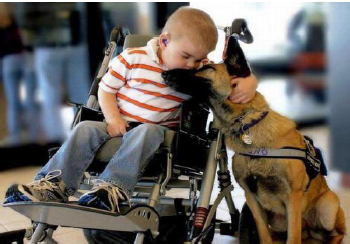Definition of a Service Animal
Under the ADA, a service animal is defined as a dog that has been individually trained to do work or perform tasks for an individual with a disability. The task(s) performed by the dog must be directly related to the person’s disability.
When Might a Service Animal be Excluded? When Might a Service Dog’s Presence Fundamentally Alter the Nature of a Service or Program Provided to the Public?
At a zoo, service animals can be restricted from areas where the animals on display are the natural prey or natural predators of dogs, where the presence of a dog would be disruptive, causing the displayed animals to behave aggressively or become agitated. They cannot be restricted from other areas of the zoo.
What Does Under Control Mean? Do Service Animals Have to be on a Leash?
The ADA requires that service animals be under the control of the handler at all times. In most instances, the handler will be the individual with a disability or a third party who accompanies the individual with a disability. The service animal must be harnessed, leashed, or tethered while in public places unless these devices interfere with the service animal’s work or the person’s disability prevents use of these devices. In that case, the person must use voice, signal, or other effective means to maintain control of the animal.

